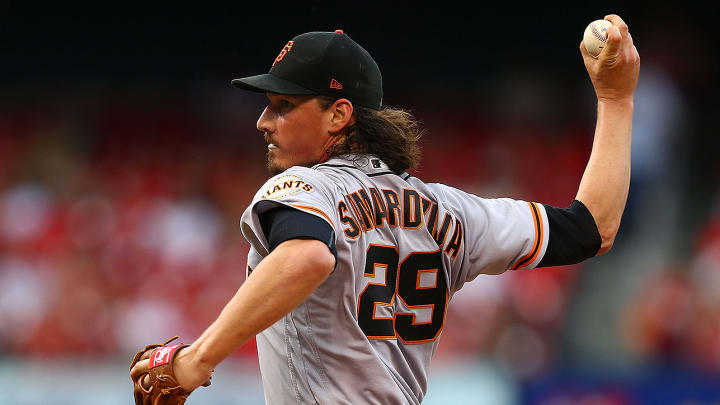26. San Francisco Giants (19–26, minus-63, LT: 28)

They own the fourth-worst record in the National League, not what anyone expected coming into this season. Still, the Giants have won seven of their past nine games to crawl back toward semi-respectability.
If you had to pick one player who typifies the team’s bizarre season, it would have to be Jeff Samardzija. Among NL pitchers, only Bartolo Colon owns a bigger gap between his ERA and his fielding-independent results. That gap was especially acute in April. In five starts during the first month of the season, Samardzija fanned 35 hitters and walked 10 in 31 ⅓ innings, firing strikes a healthy 63% of the time. Problem was, he was a little too good at pounding the strike zone: Opponents slugged .487 against him with six home runs, while also bunching hits together enough to sentence Samardzija to a brutal 6.32 ERA. The most Samardzija-esque start of his season came on May 9. Facing the battered Mets, the big right-hander punched out nine batters and walked none over seven innings. But yet again, one big inning did him in, with the Mets striking for four in the first, ultimately saddling him with six runs, 10 hits, and a loss.
We’ve discussed the concept of Cluster Luck numerous times in this space, though mostly from a team point of view. Over the long haul, neither hitters nor pitchers typically show any particular ability (or lack thereof) to bunch hits together (or scatter them)...so if you see that happening a lot in a small sample of games, expect some regression toward the mean. For Samardzija, that positive reversal of fortune is starting to happen. In his three May starts that weren’t that Mets debacle, he’s allowed a total of just three earned runs. Even better, he’s pounding the zone even more frequently, but with better command of his pitches. Opponents are slugging just .369 against him in May, with just one homer allowed in 29 ⅔ innings. He’s throwing strikes an eye-popping 70% of the time. Meanwhile, his strikeout-to-walk is almost unfathomable during that four-start stretch: 36 Ks, and zero bases on balls.
Already sporting a four-pitch repertoire that includes a mid-90s fastball, he’s resurrected his curveballafter keeping it in on ice for three seasons, and also started throwing more splitters. The splitter has induced swinging strikes against one-fifth of the batters he’s faced this season. Add a rubber arm that’s enabled Samardzija to face a league-leading 249 batters, and you have a rare source of optimism for an underachieving team (not to mention a prime buy-low candidate if his owner in your fantasy league is fed up with the 1-5 record and still-high 4.57 ERA).
